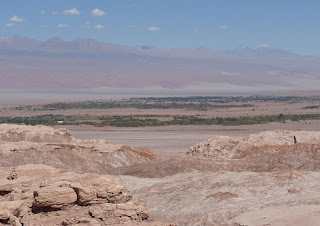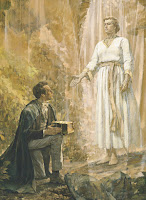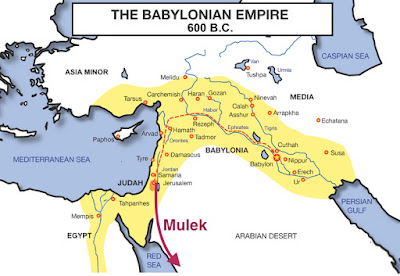Comment #1: “Proof of Lehi’s family knowing about the sea and being on it is shown in Nephi’s response to the Lord telling him he was to build a ship. He did not question the fact that he could build a ship, obviously he had been around ship building and knew of it. All he asked was where to go to find ore to build tools” Les T.
Response: Nephi has already described himself as a person who trusted in the Lord. He stated: “I know that the Lord giveth no commandments unto the children of men, save he shall prepare a way for them that they may accomplish the thing which he commandeth them” (1 Nephi 3:7). Unlike most of us, he had no doubts he could do whatever the Lord asked of him whether or not he knew anything about the task, all he wanted to know was where to find the ore to build the tools so he could get started. There is no indication in this that he knew anything about ship building, only that the Lord would show him how to do it.
Comment #2: “It seems to me that the story of Zelph as given by Joseph Smith himself would tell you that the Nephites and Lamanites were in North America, not South America and the last, great battle was fought right there around the hill Cumorah as Meldrum and others claim” Raymond G.
Mound 8 where the bones identified as
Zelph were unearthed during Zion’s Camp in Pike County, Illinois
As Joseph Smith stated in the History of the Church, “This morning I went up on a high mound, near the river, accompanied by the brethren. From this mound we could overlook the tops of the trees and view the prairie on each side of the river as far as our vision could extend and the scenery was truly delightful. On the top of the mound were stones which presented the appearance of three altars having been erected one above the other, according to the ancient order, and the remains of bones were strewn over the surface of the ground. The brethren procured a shovel and a hoe, and removing the earth to the depth of about one foot discovered the skeleton of a man, almost entire, and between his ribs the stone point of a Lamanitsh arrow, which evidently produced his death. Elder Burr Riggs retained the arrow. The contemplation of the scenery around us produced peculiar sensations in our bosoms, and subsequently the visions of the past being opened to my understanding by the spirit of the almighty.
Joseph went on to write: “I discovered that the person whose skeleton was before us was a white Lamanite a large, thick-set man, and a man of God. His name was Zelph. He was a warrior and chieftain under the great prophet Onandagus, who was known from the eastern sea to the Rocky Mountains. The curse was taken from Zelph, or at least, in part—one of his thigh bones was broken by a stone flung from a sling, while in battle, years before his death. He was killed in battle by the arrow found among his ribs, during a great struggle with the Lamanites” (Documentary History of the Church, Vol II, 1904 edition, pp79-80, as quoted in U.A.S. Newsletter, January 30, 1961).
Because the story of Zelph is worded differently in the current edition of the Documentary History of the Church, we need to look at Fletcher B. Hammond’s book Geography of the Book of Mormon (Bookcraft, 1960, pp102-103) where he refers to careful examination of a microfilm copy of the original entry in the Prophet’s journal, which he says indicates that the 1904 edition of the Documentary History of the Church correctly reproduces the words of that entry, whereas the current edition does not. We should note that the words “the hill Cumorah” and “the last great struggle of the Lamanites and the Nephites,” in the current edition, are not in the original. Thus, Zelph was killed during ‘a” great struggle with the Lamanites, not during the “final” struggle with the Lamanites. Note to that in the Prophet’s words, Onandagus was known from the eastern sea to the Rocky Mountains, not from the East Sea to the West Sea. Such small errors in reproduction cause enormous misunderstandings in people’s interpretation of what Joseph Smith’s statement meant.
Comment #3: “I read this recently about South America and thought you might want to respond: ‘This Chilean landing site places Lehi's party in an arid climate, as we know it today. They would be south of any forested lands having to cross over a 1000-miles desert lands northward to arrive at such in Bolivia and Southern Peru. This includes the 600 mile Atacama desert known as the driest desert and land on earth.’ Hardly seems likely this would have been Lehi’s landing site” Richard R.
Response: This is probably Don R. Hender’s article “The Chile Landing Site: A Myth?” which has appeared on several internet web sites, and which we had addressed before. However, since you ask, let me suggest that people’s opinions are scattered all over websites, articles and books written about the Land of Promise found in the Book of Mormon. The problem with Henders rationale is tht it is simply wrong. Let me respond with these points:
The Atacama Desert
2. The Atacama Desert would be passed through if someone were to travel from La Serena north along the coast. However, when one travels in Andean South America, one learns to travel where the mountain passes are located, and a little east of the Atacama Desert is the Andean foothills of the Cordillera Occidental (Western Andes) with passes that lead through the Argentina border area and onto the Altiplano that eventually takes one past Lake Titicaca and to the El Raya Pass and eventually into Cuzco. It is a fairly pleasant trip climate wise, and avoids the desert lands along the coast.
3. South of La Serena, bordering on the city and flowing south and east is the Valdivian forest of Chile, part of the Fray Jorge National Park, home among others of the majestic Alerc tree which can reach heights of 377 feet, and live for more than 3000 years. This forest covers 103,301 square miles, and extends as far east as Argentina, and considered even larger in B.C. times.
We have written about this area before to show how well it matches the landing site Nephi describes. The problem with Hender’s article and so many others is that the writers simply do not bother to look up the facts, but rely on erroneous statements made by other theorists.
Comment #4: “I just got through reading your book “Lehi Never Saw Mesoamerica.” It is very good and I see that this is the place where they lived. Years ago I read The Book and the Map by Venice Priddis and was sold on South America after that. I was curious as to why you don't ever quote her in your books? Also Did you find the narrow neck on your own or did you get it from her? She and Verla Birrell were the first that I can find that discussed the location of the narrow neck. Good stuff! keep up the good work.” IT
Response: I did not know about Venice Priddis until long after that book and the others I’ve written were published. I found her book a couple of years ago and thought it was great and since then have commented frequently about her work. I came across the narrow neck series of lengthy discussions with Art Kocherhans, who wrote Lehi’s Isle of Promise.

































